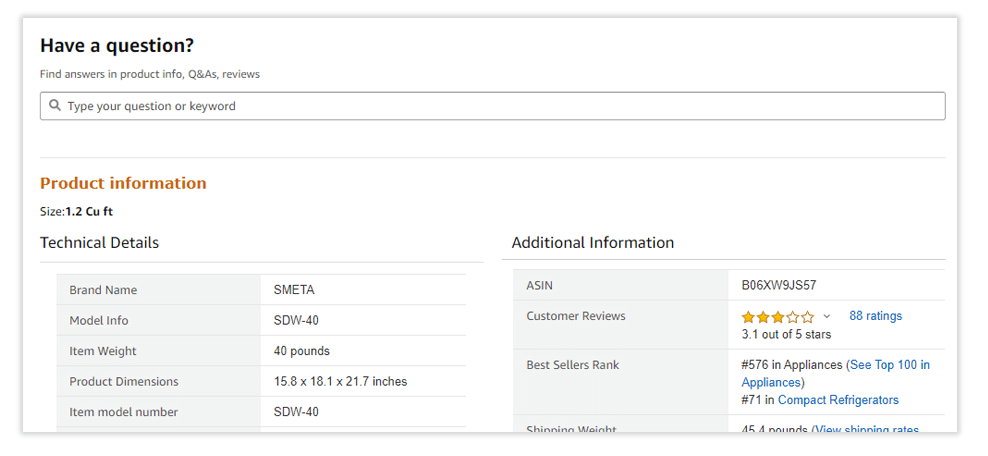
Current ecommerce conversion rates range from 1-4%, leaving many online business owners scratching their heads about how to improve them. With conversion rates that low, you’d think consumers don’t like shopping online.
But as it turns out, consumers love shopping online. When polled about what exactly they love, shoppers frequently mentioned the convenience is important to them (87%), as well as coupons and discounts (38%), quick checkout process (29.7%), and free shipping (49.7%). What consumers don’t love is a lack of product expertise. Recent data shows that 10% of well-known ecommerce giants miss the mark when it comes to providing detailed product descriptions. More and more studies are pointing out that some of consumer’s biggest frustrations circle around a lack of competence on the part of the business.
The good news is that ecommerce conversion rate optimization is as simple as communicating product expertise with stellar product pages and descriptions. Here are three ways you can use your product expertise to increase your ecommerce conversions.
Method 1: Develop a customer-centric journey—one that communicates product expertise.
The customer journey is becoming an increasingly important part of online shopping. Brick and mortar retailers work to instill consumers with confidence and position their business as the expert in relation to the products they’re selling. But it requires a little work on your site and on your product pages to accomplish that same goal. If done well, there are areas where you can manage this even better than a brick and mortar experience.
One way that brick and mortar based brands communicate product expertise is through their sales staff. From apparel to automobiles, it’s easier to instill consumers with a perception of brand competence with a knowledgeable salesperson who knows the product well and can help customers find the best fit.
But even that personal experience falls short of the customer’s ideal. Have you ever been to a store where you’ve wanted to ask a question about a product and (1) may have a hard time finding somebody to answer and (2) the person you do find doesn’t have in-depth knowledge about that specific product? For ecommerce merchants, this is an opportunity.
Ecommerce enables shop owners to publish great product information that is well communicated, edited, and brushed up on before it's published. Once that content is published, it doesn’t take a lunch break, doesn’t have a bad day, and is never a newbie worker who is “being trained”—it stays the same great information communicated effectively regardless of who enters the store, and can serve an infinite number of customers with a consistently great experience.
Amazon has figured this out in a big way. Jeff Bezos attributes Amazon’s whopping 74% conversion rate to a single-minded, obsessive focus on the customer. Shopping on Amazon is almost like you’re being waited on by a salesperson who knows everything in the store.
Similar to the way an expert salesperson can help a customer find the right product by exploring their issue from every angle, Amazon lets online shoppers explore products from multiple angles—like copywritten product information, product questions and answers, videos, pictures, and reviews.
It should be your goal to accomplish this same service. Make sure you have detailed product information that is easily accessible and hits the nail on the head for customers of all learning styles and preferences. That means quality product description, photos, videos, and other formats of product information, as well as recommendations for other complimentary products. Make sure your product pages are informative and helpful, and you’ll start to see a lift in your conversion rates.
Method 2: Use customer questions to share expertise and optimize conversions.
Sometimes a teacher learns more from their students than the students learn from the teacher—questions help can help a teacher dive deeper into a specific topic and bring out the most relevant expertise for their audience of students. Many students have the same questions, but not all of them raise their hand to ask. It’s true in education, and it’s also true if you’re looking to increase ecommerce conversions.
Amazon is a perfect example of this principle at work. While there is no chat feature on Amazon product pages, there is a prominent customer engagement feature that allows customers to ask product questions.

That product Q&A feature will redirect them to a product question and answer section, where the most commonly asked questions have already been answered. If they haven’t, the customer can post the question for other shoppers or vendors to answer—and you can bet that proactive vendors answer those questions.
It’s these questions that can help vendors highlight the most relevant information related to their product and show off their expertise by providing excellent answers. One of the easiest ways to systemize these questions and leverage them into a better display of your product knowledge is through a product Q&A software solution—a real boon to your ecommerce conversion rate optimization.
Such solutions allow you to build an extensive knowledge base or relevant product expertise that helps convert customers on the spot and prevents them from needing to go to Google and other merchants in search of answers.
As an added bonus in enhancing the product expertise on your page, you can use that Q&A engagement to recognize the information that is in highest demand, and then use that data to enhance your product descriptions, create new videos, etc. All of this creates a cycle of product expertise optimization that continues to lift your conversion rates.
Method 3: Use customer reviews to back up your expertise.
Consumers invest lots of time into product research, and much of it is crowd-sourced. Around 93% of consumers read online reviews before making a purchase. Even if they’re purchasing something in a brick-and-mortar store, 82% of them will go online to learn more about the product even though it’s sitting right in front of them. As many as 72% of consumers indicate that positive online reviews make them trust a business more, and having and communicating product expertise is a critical piece to ensuring that the majority of your reviews are positive.
You won’t be able to eliminate bad reviews altogether, but you can look at them as an opportunity to communicate product expertise. If consumers post about a particular challenge or negative experience, you can address their problem competently and professionally in a public forum. The way you manage negative experiences can be more telling than a simple 5 star review—it’s an opportunity to show the world how you will work to ensure they’re taken care of in every situation.
Learn from the best about ecommerce conversion optimization.
If you need an example of these concepts at work, look no further than Amazon. We’ve mentioned Amazon several times already...but have we mentioned their $538 billion annual revenues?
One of the key tools that Amazon uses to keep shoppers from going elsewhere is communicating product expertise. They do this through building stellar, customer-focused product pages with lots of information, allowing customers to ask questions and giving the best chance for great customer reviews. Their strategy is about communicating as much product expertise as possible, as clearly as possible.
So remember: conversion rate optimization is not a mystery. With simple fixes such as creating a customer-focused journey, curating and showcasing reviews, and leveraging a Q&A solution to fill out gaps in your product pages, you’ll be well on your way to increasing ecommerce conversions for your business.











